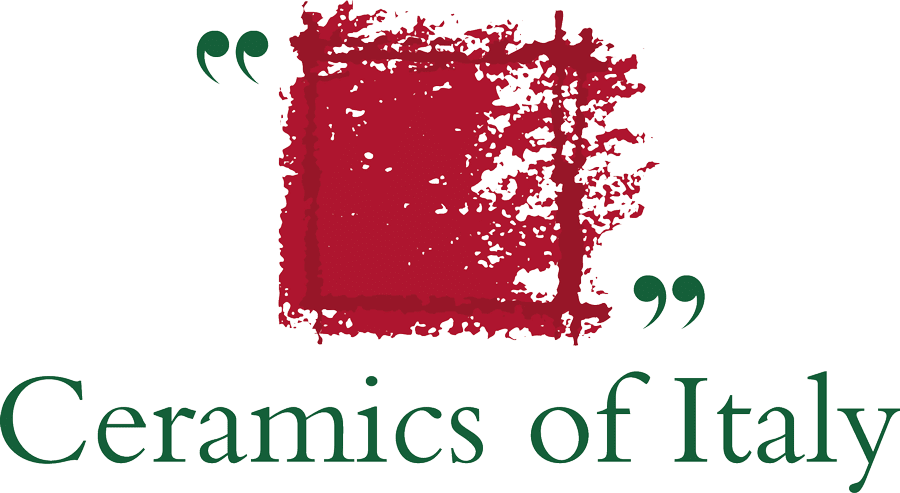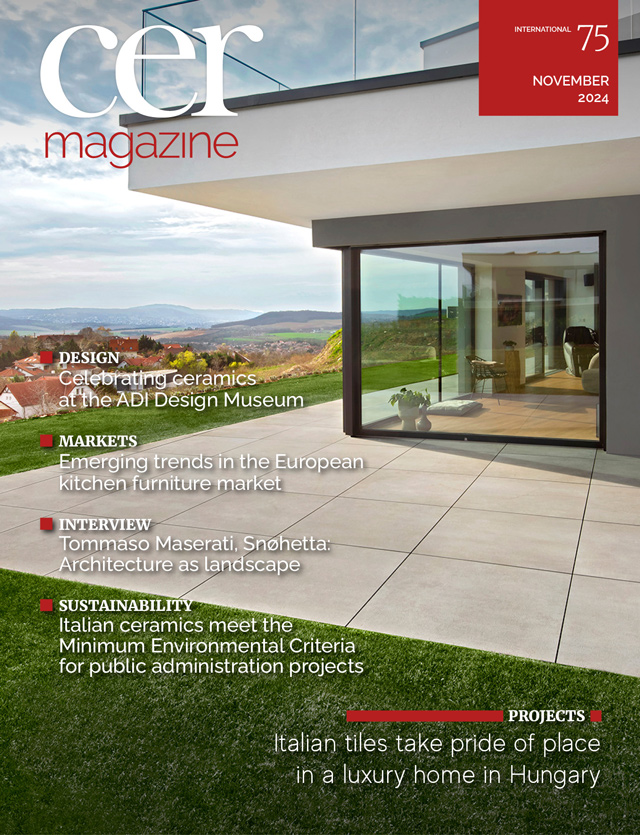A home designed by architect Riez Zoltán in Üröm, a small municipality with a population of around 8,000 in the province of Pest, near Hungary’s capital, features two Italian brands of ceramic tiles. However, before looking at the details of the ceramic materials, let’s explore the building itself.
The house stands out for its slender, contemporary lines that create a sense of elegance and simplicity, while its vibrant white façade contrasts beautifully with the surrounding hectare of greenery. The structure extends over two staggered floors: the ground floor houses the communal living spaces, including a spacious living room, a library and study, a dining area, and a kitchen, all seamlessly integrated, while the upper floor is devoted to the sleeping quarters. Large sliding windows open onto the garden and onto the expansive first-floor terrace, maximising the use of natural light and enhancing the interior design elements.
Ceramic tiles play a central role in defining the home’s aesthetic. The architect, a partner at Designboom studio, explains that porcelain stoneware was chosen for its versatility. Available in a wide range of colours, sizes, textures and thicknesses, it adds both elegance and warmth to the living spaces. For instance, 120×120 cm size slabs in the Light shade from Lea Ceramiche’s Concreto collection designed by Fabio Novembre were chosen for the spacious kitchen. Inspired by concrete, the iconic material of modernist architecture, these tiles create a vibrant contrast with the perforated wood used for the kitchen cabinetry.
The Concreto collection is also used in several of the ensuite bathrooms. In one bathroom, large-format Slimtech slabs with a thickness of just 6 mm are used on the walls, alternating between the Light and Rust colours to create an elegant interplay of industrial-style shades. In another bathroom, Concreto Light slabs are paired with the Medium colour variant, brightening the space and creating a calming, serene atmosphere. In the sauna area, the Concreto Light concrete-effect tiles chosen for the floor blend seamlessly with the Bio Select wood-effect tiles in the Oak Natural version used on the walls.
Riez Zoltán comments: “We chose the Lea Ceramiche slabs not only for their contemporary aesthetics and striking design, but also for their outstanding technical performance. The choice of different size and thickness options – both traditional (9.5 mm) and thin (6 mm) – was essential in achieving the desired look for the interiors. Additionally, the material’s durability and ease of maintenance, together with the incorporation of the Protect® silver ion antibacterial shield, ensured maximum hygiene, making the slabs particularly suitable for spaces such as the kitchen and bathrooms.”
For a spacious third bathroom, architect Riez Zoltán opted for the Blade collection, an ultra-thin panel (3.5 mm) that combines the elegance of large-format slabs with the perfection of metallic surfaces. This laminated porcelain stoneware stands out for its warm tones and luminous highlights, inspired by metal oxidation processes that give rise to five vibrant, ever-changing colours. Large surfaces in a 100×100 cm size and Oxide colour were selected for the flooring, while 50×100 cm Blade Oxide and 100×300 cm Blade Essence versions were used on the walls. The overall aesthetic effect is very striking thanks to the metallic accents. Blade is part of the PROTECT® line, a technology that ensures hygienic, safe surfaces thanks to a silver ion shield that eliminates up to 99.9% of bacteria.
With its ultra-thin 3.5 mm profile, Blade meets sustainability criteria and is part of the carbon-neutral slab range thanks to its reduced raw material use and CO2 emissions during production, with any remaining emissions offset across the entire product lifecycle.















